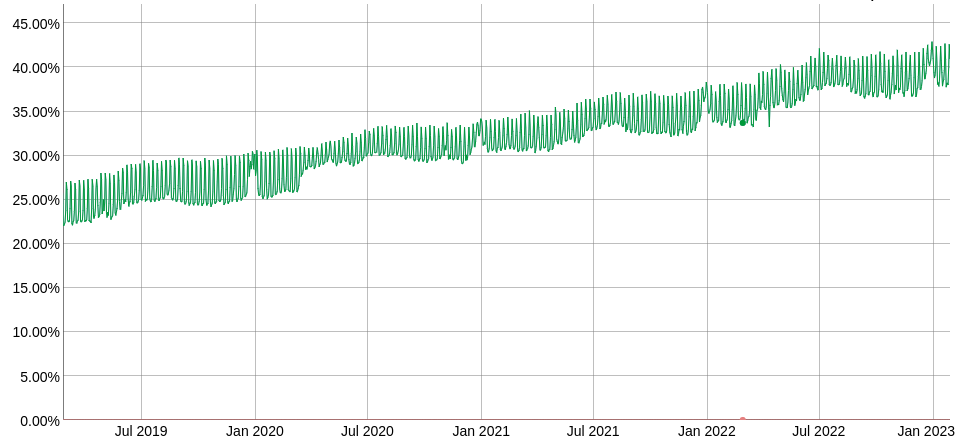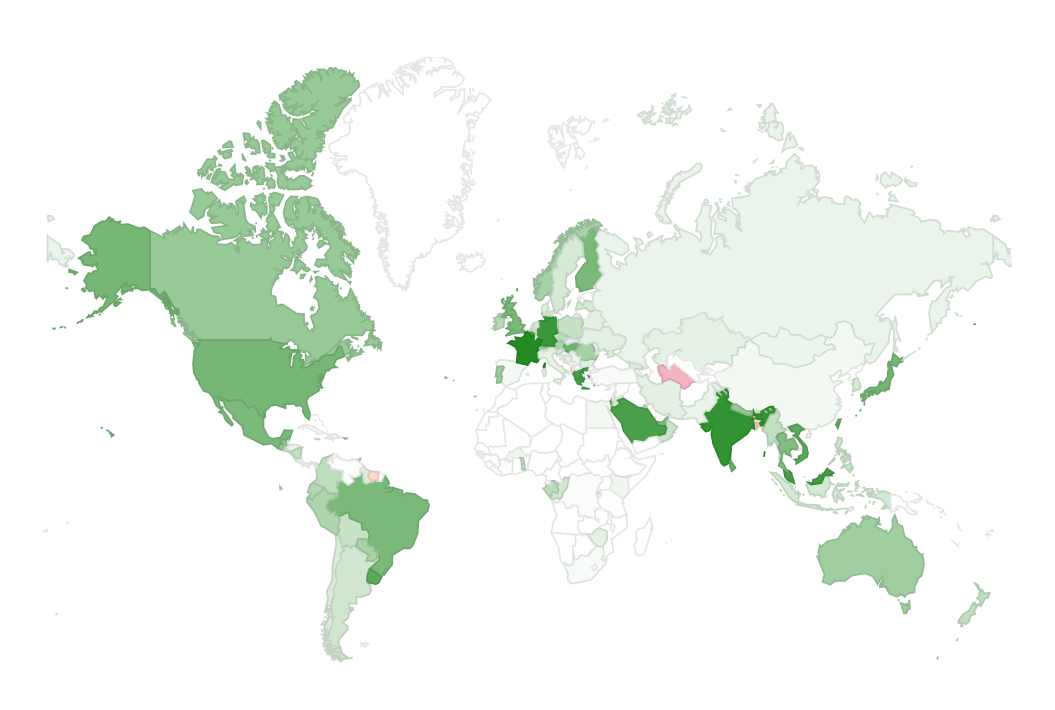

Keep users in the loop.
Ship release notes that get read
Try Noticeable
The Internet Protocol version 6 (IPv6) is the latest version of the Internet Protocol (IP) that was developed to deal with the rapid growth of the Internet. In 2023, the IPv6 adoption rate has increased significantly, driven by a growing number of organizations that are recognizing the benefits of the new protocol.

In 2023, more than 40% of users worldwide access Google over IPv6, which is a significant increase in the IPv6 adoption rate compared to previous years. This is what is known as the IPv6 adoption percentage.
One of the key drivers for IPv6 adoption is the fact that it offers several benefits over IPv4. For example, IPv6 provides a much larger address space, which enables organizations to connect more devices to the Internet. Additionally, IPv6 provides end-to-end connectivity, which means that devices can communicate directly without the need for network address translation (NAT). This can greatly simplify network designs and improve network security.
Another factor contributing to the growth of IPv6 adoption is the increasing cost of obtaining or renting IPv4 addresses. The rapid growth of the Internet has resulted in a shortage of IPv4 addresses, leading to a significant increase in the cost of obtaining or renting these addresses. This has created a strong financial incentive for organizations to adopt IPv6, which provides a much larger address space and eliminates the need for address conservation techniques like network address translation (NAT).
By adopting IPv6, organizations can not only take advantage of its many technical benefits but also save money in the long run by avoiding the increasing costs of IPv4 addresses. This has made the transition to IPv6 increasingly appealing for organizations of all sizes and has contributed to the growing trend of IPv6 adoption worldwide.

When it comes to IPv6 adoption by country, France currently leads the way with an IPv6 adoption percentage of more than 74%. This has resulted in improved latency over IPv4 by 10ms on average. India and Germany follow with 69% and 66% respectively.
On the other hand, Turkmenistan lags behind with the lowest IPv6 adoption rate of only 0.05%. This highlights the fact that there is still much work to be done to increase IPv6 adoption worldwide. While many countries have made significant progress in adopting IPv6, some countries are still struggling to make the transition from IPv4 to IPv6. This may be due to a lack of resources, a lack of awareness of the benefits of IPv6, or a lack of technical expertise. Whatever the reason, it is important that these countries receive the support they need to upgrade to IPv6, in order to ensure that the Internet continues to grow and thrive.
In order to increase IPv6 adoption worldwide, a coordinated effort is needed from government, private sector and technical communities. This includes providing education and training on IPv6 technology, encouraging the development of IPv6-enabled devices and services, and providing incentives for organizations to upgrade to IPv6.
In conclusion, the state of IPv6 adoption in 2023 is looking promising, driven by a growing number of organizations that are recognizing the benefits of the new protocol. The future of the Internet looks bright, with a growing number of connected devices and a more scalable and secure IP protocol.